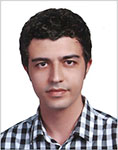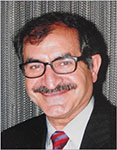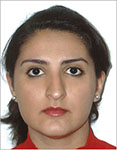Reservoir characterisation using artificial bee colony optimisation
Mohammad Sayyafzadeh A B , Manouchehr Haghighi A B , Keivan Bolouri B and Elaheh Arjomand BA Australian School of Petroleum
B The University of Adelaide
The APPEA Journal 52(1) 115-128 https://doi.org/10.1071/AJ11009
Published: 2012
Abstract
To obtain an accurate estimation of reservoir performance, the reservoir should be properly characterised. One of the main stages of reservoir characterisation is the calibration of rock property distributions with flow performance observation, which is known as history matching. The history matching procedure consists of three distinct steps: parameterisation, regularisation and optimisation. In this study, a Bayesian framework and a pilot-point approach for regularisation and parameterisation are used. The major focus of this paper is optimisation, which plays a crucial role in the reliability and quality of history matching.
Several optimisation methods have been studied for history matching, including genetic algorithm (GA), ant colony, particle swarm (PS), Gauss-Newton, Levenberg-Marquardt and Limited-memory, Broyden-Fletcher-Goldfarb-Shanno. One of the most recent optimisation algorithms used in different fields is artificial bee colony (ABC). In this study, the application of ABC in history matching is investigated for the first time. ABC is derived from the intelligent foraging behaviour of honey bees. A colony of honey bees is comprised of employed bees, onlookers and scouts. Employed bees look for food sources based on their knowledge, onlookers make decisions for foraging using employed bees’ observations, and scouts search for food randomly.
To investigate the application of ABC in history matching, its results for two different synthetic cases are compared with the outcomes of three different optimisation methods: real-valued GA, simulated annealing (SA), and pre-conditioned steepest descent. In the first case, history matching using ABC afforded a better result than GA and SA. ABC reached a lower fitness value in a reasonable number of evaluations, which indicates the performance and execution-time capability of the method. ABC did not appear as efficient as PSD in the first case. In the second case, SA and PDS did not perform acceptably. GA achieved a better result in comparison to SA and PSD, but its results were not as superior as ABC’s.
ABC is not concerned with the shape of the landscape; that is, whether it is smooth or rugged. Since there is no precise information about the landscape shape of the history matching function, it can be concluded that by using ABC, there is a high chance of providing high-quality history matching and reservoir characterisation.

Mohammad Sayyafzadeh studied chemical engineering at Tehran Polytechnic (Amirkabir University of Technology) for his first university degree, graduating in 2007. He continued his studies as a postgraduate student in hydrocarbon reservoir engineering at Tehran Polytechnic and finished his Masters degree in 2010. While studying his Masters degree, he worked on streamline simulation and fast simulators. Mohammad developed a new method to estimate reservoir performance during gas and water flooding using transfer functions, and published four journal and SPE conference papers. He was a member of the reservoir simulation and production research group, who successfully received two appreciable research grants from National Iranian Oil Company (NIOC) at the University of Tehran for two years. As a recipient of a full scholarship from Santos and the University of Adelaide, Mohammad is a second year PhD candidate in petroleum engineering. His research interests are optimisation, reservoir characterisation, geostatistics and inverse problem theory. Member: SPE, PESA, AAPG and EAGE. Mohammad.Sayyafzadeh@adelaide.edu.au |

Manouchehr Haghighi is a senior lecturer at the Australian School of Petroleum, the University of Adelaide. He and his team are heavily involved in different research projects about both conventional and unconventional reservoirs. Before joining the University of Adelaide in 2009, he was associate professor of petroleum engineering at the University of Tehran, Iran. During 2000–09, he supervised more than 40 MSc and PhD students. From 1996–2000, he worked with the National Iranian Oil Company and was the director of a program for training of NIOC staff at several universities in the US, the UK, Canada, France, and Norway. He was a visiting professor at the University of Calgary from 2007–08. He has published numerous articles in peer review journals, presented many papers at international conferences, and has served as a reviewer for several journals. Member: SPE. tanelson@agl.com.au |

Keivan Bolouri is a Masters student in mechanical engineering at the University of Adelaide. He studied his Bachelor degree in mechanical engineering at the University of Tehran, where he developed a keen interest in the optimisation of mechanical systems under supervision of the Faculty of Mechanical Engineering of Tehran University. During his Masters degree, he completed many optimisation projects, such as the power optimisation of a five-speed manual gearbox by GA, single and parallel machine scheduling and V-belt multi-pulley power transmission optimisation. He also worked at the TarhNegasht design and manufacturing firm for two years. keivan.bolouri@student.adelaide.edu.au |

Elaheh Arjomand studied a Bachelor of Civil Engineering at Bahonar University in Kerman, Iran. In 2010, she started her Masters of Civil and Environmental Engineering at the University of Adelaide. She is now working on the convergence behaviour of evolutionary algorithms for her research projects. elaheh.arjomand@student.adelaide.edu.au |


